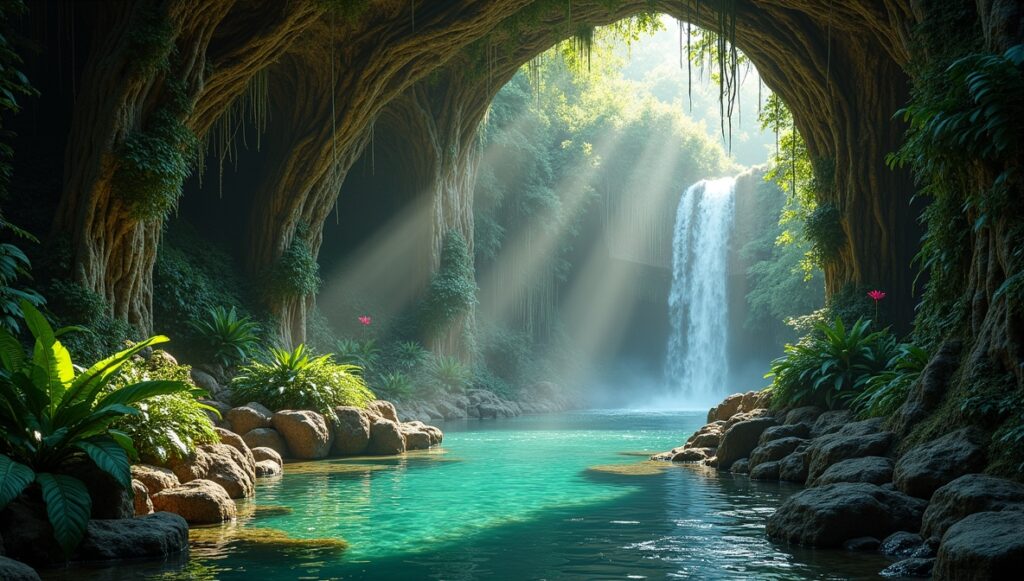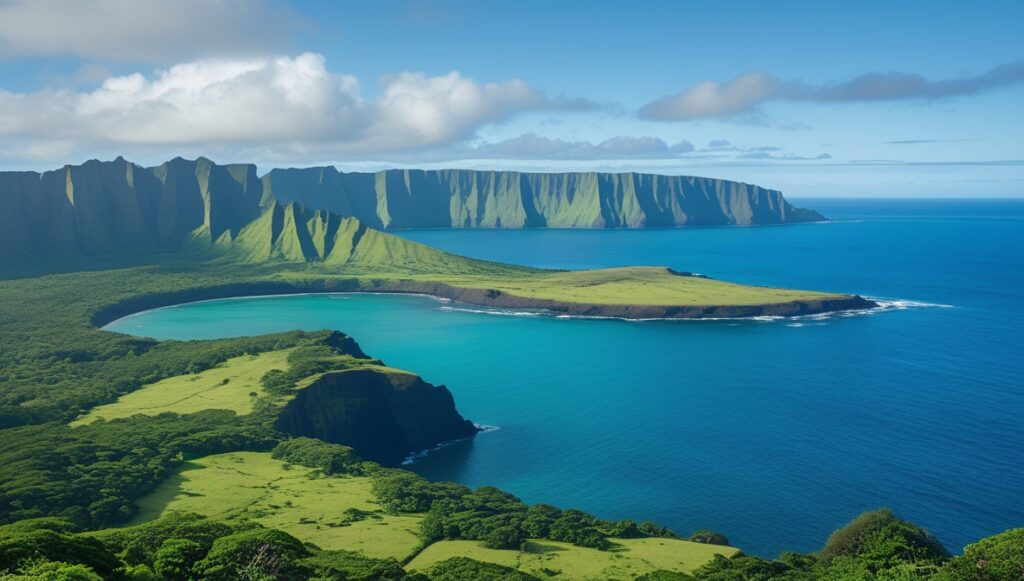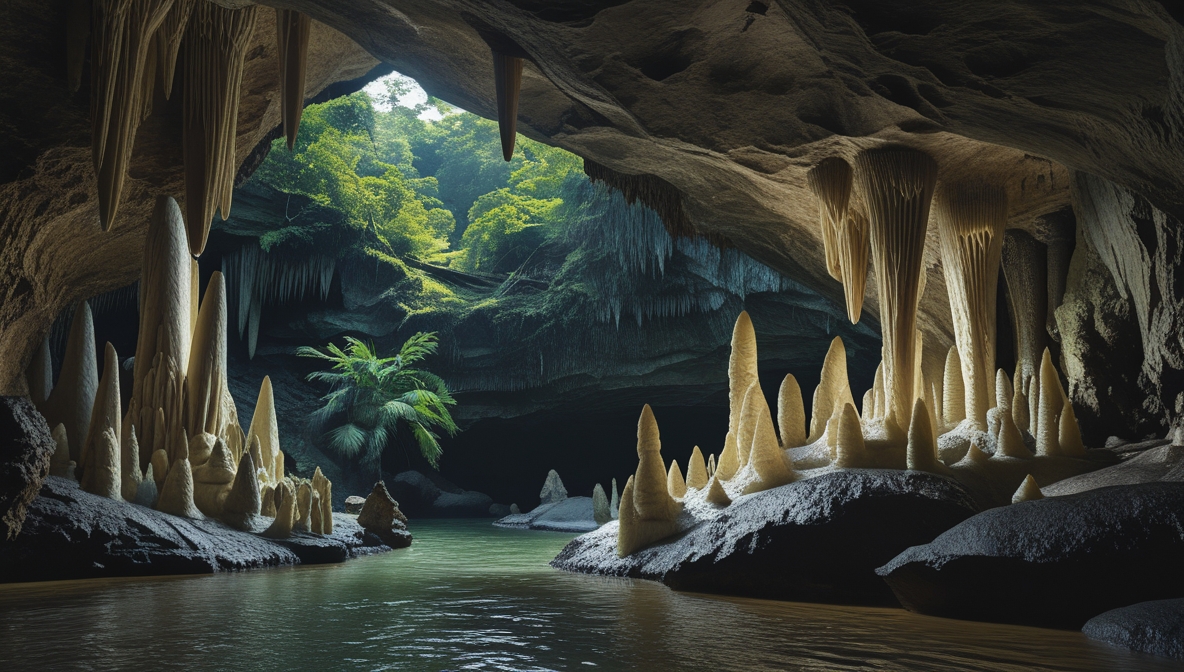Overview:
Nestled in the heart of Tonga, ʻEua National Park is a hidden gem waiting to be discovered. With rugged cliffs, lush forests, and a wealth of diverse flora and fauna, this park offers a unique escape for adventure lovers and nature enthusiasts. The park covers much of ʻEua Island, the second-largest island in Tonga, and provides a perfect blend of dramatic landscapes, hiking trails, and natural wonders. Whether you’re looking to explore caves, hike through ancient rainforests, or enjoy the stunning views of the Pacific Ocean, ʻEua National Park is a must-visit destination for nature lovers and outdoor adventurers.


Quick Facts:
Location: ʻEua Island, Tonga
Size: 1,500 hectares
Established: 2002
Topography: Forests, cliffs, caves, and coastal views
Best Time to Visit: May to October (dry season)
Official Language: Tongan
Accessibility: Accessible by ferry or boat from Tongatapu
Entry Fee: Free (some tours may charge a fee)
Budget Breakdown:
| Expense Category | Cost (TOP) | Cost (USD) |
|---|---|---|
| Local Bus Fare | T$5 | $2.10 |
| Taxi (Roundtrip from Nuku’alofa) | T$150 – T$200 | $65 – $85 |
| Guided Tour (per person) | T$80 | $34 |
| Snacks and Water | T$15 | $6.40 |
| Souvenirs | T$20 | $8.60 |
| Total Estimate | T$270 – T$320 | $113 – $136 |
Note: Exchange rates may vary, so check current rates before booking your trip.
Getting There:
By Ferry: Ferries from Nuku’alofa to ʻEua run several times a week, taking around 2 hours. From the port, taxis are available to take you to the National Park.
By Air: There are also flights from Nuku’alofa to ʻEua, with a flight time of approximately 30 minutes.
Flights:
Flights to ʻEua typically depart from Nuku’alofa, the capital of Tonga. There are limited flights available, but you can book a flight with Real Tonga Airlines, which operates daily flights between the two islands.
Flight Time: 30 minutes
Round-trip cost: T$200 – T$300 (approx. $85 – $128 USD)
Booking Tip: It’s best to book flights in advance, especially during the high season (May to October).
Safety:
Hiking Safety: When hiking within ʻEua National Park, always stay on designated trails, as the terrain can be rugged and uneven.
Wildlife Safety: While the park is home to several species of birds, it’s important to respect wildlife and not disturb their habitats.
Sun Protection: The Tongan sun can be intense, so always wear sunscreen, a hat, and sunglasses to protect yourself from UV rays.
Local Health: There are no significant health risks in ʻEua, but be sure to carry personal medications if needed.
Climate:
ʻEua National Park enjoys a tropical climate, with distinct dry and wet seasons:
Dry Season (May–October): This is the ideal time to visit, with mild temperatures ranging from 21°C to 26°C. The weather is generally sunny, making it perfect for hiking and outdoor activities.
Wet Season (November–April): Expect high humidity, temperatures ranging from 25°C to 30°C, and more frequent rainfall. Although lush and vibrant, it’s not ideal for outdoor activities during heavy rains.
For a more comfortable experience, plan your visit during the dry season.
Best Things to Do in ʻEua National Park:
Hiking the Trails: The park is known for its extensive hiking network, which caters to all levels of hikers. Popular trails include the Mount Talau hike, offering panoramic views of the island and ocean. For the more adventurous, try the Ha’amonga Caves Trail, which leads you through lush rainforest and to ancient limestone caves.
Cave Exploration: ʻEua National Park is home to several stunning limestone caves, including the Tuputapu Cave and Talau Cave, which are rich in geological features. You can explore these caves with a local guide to learn more about their history and formation.
Wildlife Watching: The park is teeming with native flora and fauna, including the Pacific pigeon and the Tongan megapode. Birdwatchers will be delighted by the variety of endemic species. The dense forest offers excellent opportunities for wildlife spotting.
Scenic Lookouts: The park’s natural viewpoints offer breathtaking vistas of ʻEua Island and the surrounding Pacific Ocean. Talau Mountain provides one of the best panoramic views of the island, especially during sunrise or sunset.
ʻEua National Park Travel Guide:
Accommodation: There are several guesthouses and small hotels in ʻEua, with prices ranging from budget to mid-range. Many visitors choose to stay in Nuku’alofa and travel to ʻEua for the day.
Dining: Traditional Tongan dishes can be enjoyed in local restaurants and eateries in ʻEua and Nuku’alofa. Don’t miss trying palusami, a traditional Tongan dish made with taro leaves and coconut cream.
Local Transportation: The island has taxis, rental cars, and buses that can be used to travel around. However, it’s advisable to hire a local guide if you plan to hike in the park for safety and expertise.
Language: Tongan is the official language, but English is widely spoken, especially in tourist areas.
Top Attractions in ʻEua National Park:
Mount Talau:
One of the most popular hiking spots in ʻEua, offering spectacular panoramic views. The climb is moderate and takes around 1-2 hours to reach the summit.Ha’amonga Caves:
These caves are the main geological feature of the ʻEua National park, offering a peek into the island’s ancient volcanic past. The caves are deep, dark, and full of amazing stalactites and stalagmites.Tuputapu Cave:
A hidden gem, Tuputapu Cave is less frequented by tourists, providing an intimate experience with nature. The cave has crystal-clear pools and interesting rock formations.

